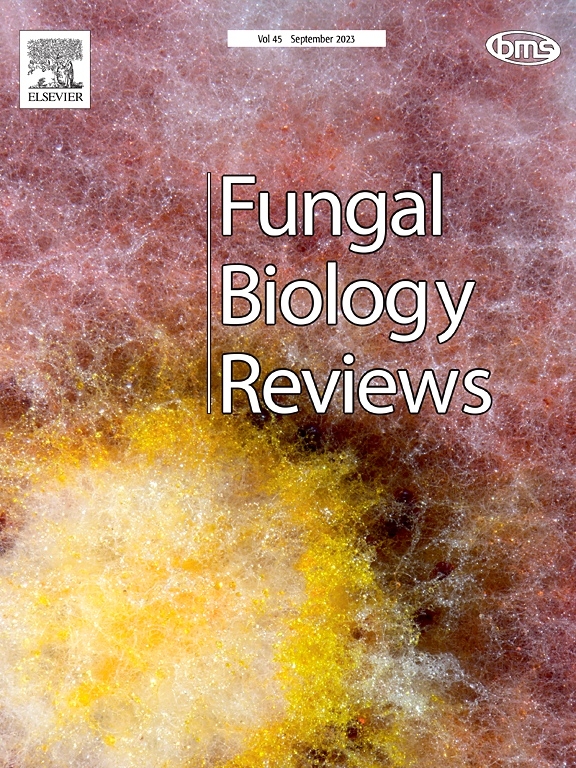氟康唑与天然化合物的结合:治疗抗药性白色念珠菌感染的有效策略
IF 4.6
2区 生物学
Q1 MYCOLOGY
引用次数: 0
摘要
入住重症监护室的患者或免疫力低下的患者经常会发生真菌感染。白色念珠菌(C. albicans)是导致大多数侵袭性真菌感染的致病真菌。氟康唑(FLC)因其疗效好、价格低廉而成为临床上使用最广泛的抗真菌药物。然而,由于氟康唑的广泛使用,白僵菌对氟康唑的耐药性越来越强。耐药性的增加给抗真菌治疗带来了巨大挑战。为了扭转白僵菌对 FLC 的耐药性,人们进行了各种尝试,包括与毒性低、成本低、抗真菌效力高的天然化合物联合使用。此外,各种天然化合物与 FLC 在体外和体内对白念珠菌具有协同作用,尤其是在治疗耐药分离株时。本综述总结了与 FLC 结合使用时对白僵菌具有协同作用的天然化合物。截至 2023 年 3 月,通过对 PubMed、Web of Science 和 Embase 数据库的全面搜索,确定了这些组合物。结果发现了 48 种具有潜在临床应用价值的天然抗真菌化合物。这些化合物协同作用的最常见机制包括抑制药物外流、诱导线粒体功能障碍和积累活性氧(ROS)。FLC 与天然化合物的结合为治疗白僵菌感染提供了潜在的新选择,并为逆转抗药性提供了新的思路。本文章由计算机程序翻译,如有差异,请以英文原文为准。
Combination of fluconazole with natural compounds: A promising strategy to manage resistant Candida albicans infections
Patients admitted to the intensive care unit or immunocompromised patients frequently develop fungal infections. Candida albicans (C. albicans) is the pathogenic fungus responsible for most invasive fungal infections. Fluconazole (FLC) is the most widely used antifungal agent in clinical practice due to its effectiveness and low cost. However, due to its widespread use, C. albicans is becoming increasingly resistant to FLC. This increase in resistance poses a significant challenge for antifungal treatments. Various attempts have been made to reverse the resistance of C. albicans to FLC, including combinations with natural compounds with low toxicity, low cost, and high antifungal efficacy. Furthermore, various natural compounds have in vitro and in vivo synergistic effects with FLC against C. albicans, particularly when treating resistant isolates. This review summarises natural compounds that, when combined with FLC, exhibit synergistic effects against C. albicans. These combinations were identified through a comprehensive search of PubMed, Web of Science, and Embase databases until March 2023. Forty-eight natural antifungal compounds with potential clinical applications were identified. The most common mechanisms underlying their synergistic effects include inhibition of drug efflux, induction of mitochondrial dysfunction, and accumulation of reactive oxygen species (ROS). The combination of FLC with natural compounds provides potential new therapeutic options against C. albicans infections and offers insights into reversing resistance.
求助全文
通过发布文献求助,成功后即可免费获取论文全文。
去求助
来源期刊

Fungal Biology Reviews
MYCOLOGY-
CiteScore
10.60
自引率
0.00%
发文量
36
期刊介绍:
Fungal Biology Reviews is an international reviews journal, owned by the British Mycological Society. Its objective is to provide a forum for high quality review articles within fungal biology. It covers all fields of fungal biology, whether fundamental or applied, including fungal diversity, ecology, evolution, physiology and ecophysiology, biochemistry, genetics and molecular biology, cell biology, interactions (symbiosis, pathogenesis etc), environmental aspects, biotechnology and taxonomy. It considers aspects of all organisms historically or recently recognized as fungi, including lichen-fungi, microsporidia, oomycetes, slime moulds, stramenopiles, and yeasts.
 求助内容:
求助内容: 应助结果提醒方式:
应助结果提醒方式:


